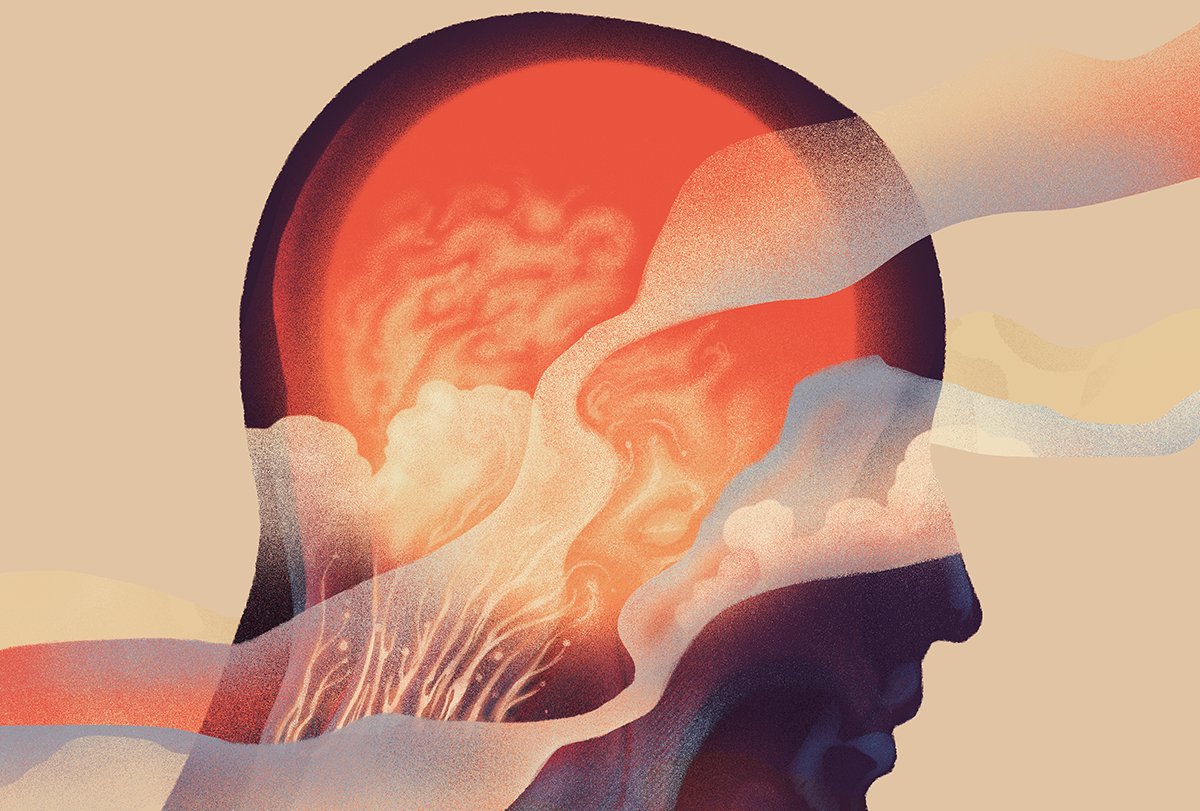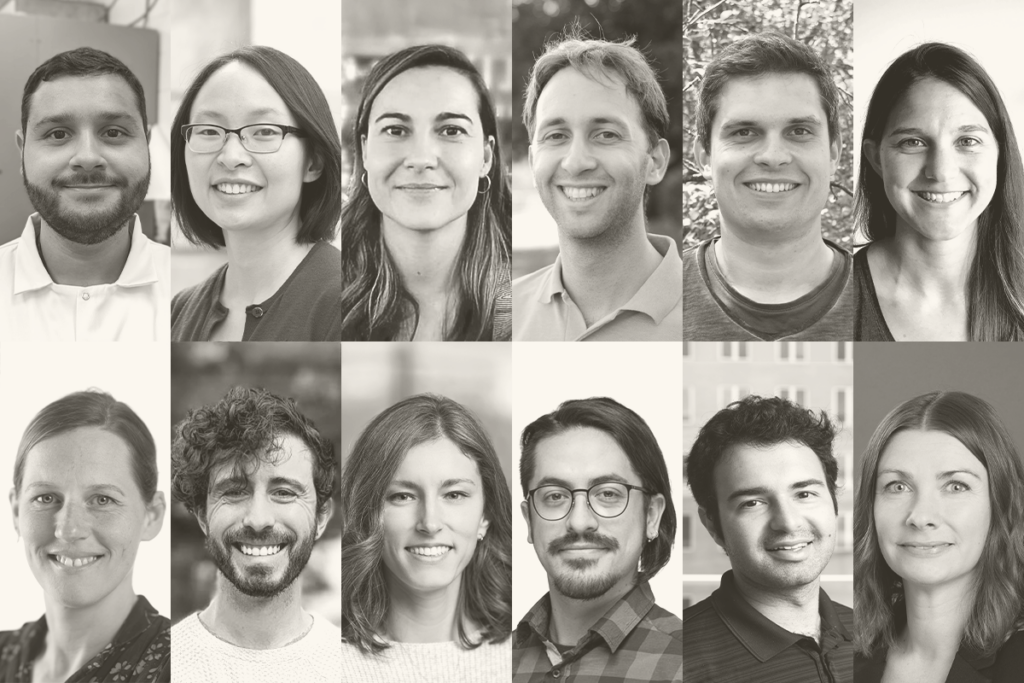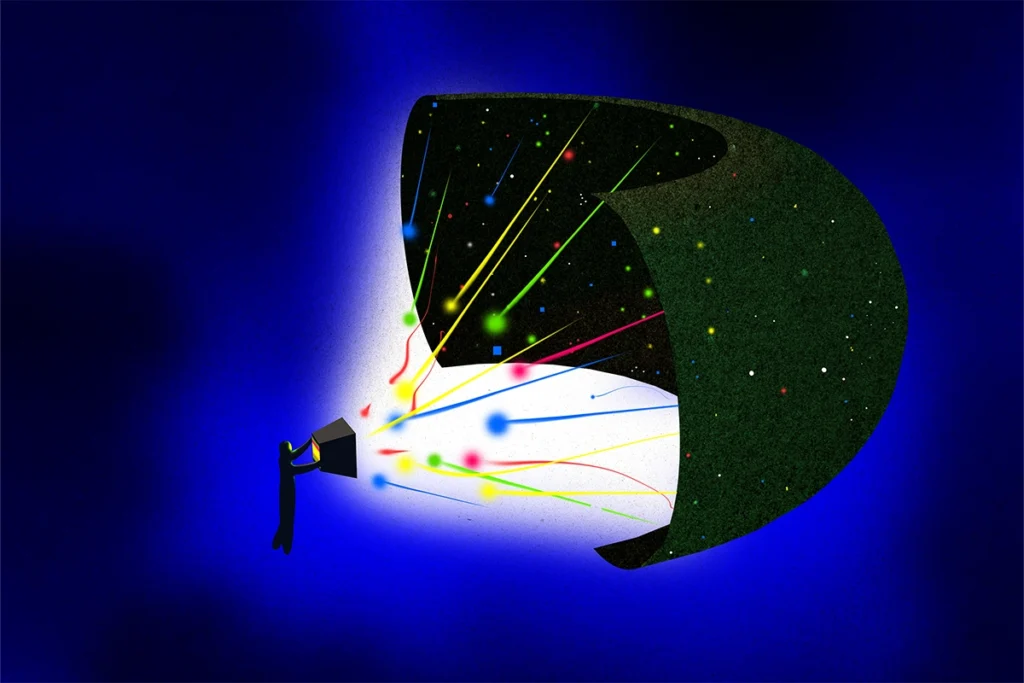On her first day as a science program fellow at the Kavli Foundation, Angie Michaiel had a tall task ahead of her: Identify a new focus for neuroscience that was understudied, undersupported and had the potential to benefit humanity.
So she dove into the literature. By the end of her first year, in 2021, she had come across a study that documented a link between rising ocean temperatures and an increase in the temperature required to “crash,” or stop the rhythmic firing of, a crab’s stomatogastric ganglion.
“I thought that was kind of groundbreaking, to connect those two areas together,” says Michaiel, now associate program officer of neuroscience at the foundation. The more she read about the “vast” ways in which climate change affects nervous systems, the clearer it became “that we really don’t know that much at all,” she says.
This exploration eventually evolved into the Neurobiology and Changing Ecosystems Initiative, which has funded seven research projects and held its first scientific meeting in April.
Michaiel spoke with The Transmitter about her hopes for this new subfield, what she learned about fostering scientific collaborations, and how she views the relationship between a program officer and the field they support.
This interview has been edited for length and clarity.
The Transmitter: How did you approach the task of identifying a new focus area for the field?
Angie Michaiel: A general thing that program officers do is to be open to and curious about every paper that you read. It’s not necessarily about reading a paper and trying to understand the actual scientific finding; it’s about, “What does this finding mean in the broader landscape of neuroscience or society?” A lot of my process was reading papers, trying to pick up on themes and synthesize different things that people in different parts of neuroscience were starting to come up with. I also interviewed a lot of scientists about their work, where they saw it fitting in and what they were excited about.
TT: How did people respond to this focus area when you suggested it?
AM: At first it was very mixed. Some people were excited—they want to take climate action; they want to be involved in the solution. Others were more hesitant and said it sounded great in theory but questioned whether it made practical sense. The extreme of that attitude was from climate activists who would say, “What is the point of doing this when people could be taking actual climate mitigation actions?” But in my mind, not everyone is going to be able to do those things. So being able to connect neuroscientists with a way that they can take climate action is really powerful.
TT: What did it take to get this new subfield off the ground?
AM: As funders and program officers, we don’t want to be too top-down. We knew that there was a lot of scientific potential here. But we wanted to hear from the scientific community where they thought the gaps are. The first step was to bring them all together in November 2022 at the Kavli Foundation headquarters. A lot of the attendees were people that I had interviewed or that I thought had really interesting work, or their work had implications for this field that they weren’t working on yet. We did a little bit of social engineering to get them to think more big picture about their work and how they might collaborate.
Their input was basically, “This is a really exciting topic, but people aren’t necessarily working on it yet. We need to have exploratory funding to see if there are true directions that we could take.” So from that meeting, we opened up a funding call that went to three different investigators and their teams to do more exploratory work. We also funded a couple early-career researchers’ summer projects through the Grass Fellowships at the Woods Hole Marine Biological Laboratory.
TT: What do you hope to see come from studying the neurobiology of changing ecosystems?
AM: This is all super early, so I’m excited to see the actual discoveries that come out in the next few years. I hope people start to embrace environmental variability and put their work in this larger context.
I’m also excited to—and I think this is probably going to be further down the road—see more collaborations between neuroscientists and climate or earth scientists. Maybe it could take the form of more in-field studies, more freely moving behavioral studies. From that, I think we’ll get a clearer picture of how neuroscientists can contribute to fighting the climate crisis.
TT: How did it feel to gather with everyone at the first scientific meeting in April?
AM: That’s a hard question to answer. It was heartening. I am passionate about climate change, so it gives me hope that people are bringing new ideas to this problem. It was fulfilling to see everybody in the room, engaged and asking questions. It felt like a relief, like, “OK, we’re starting to move in a direction where real change can happen.”
But things are also scary. We’ve shepherded this along, but the situation in the federal government right now is terrifying. The growth of this field is threatened by everything that’s happening. So I am also worried about the ability for the research to actually happen.





